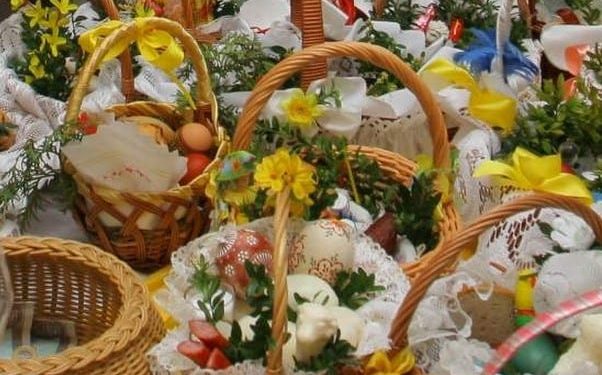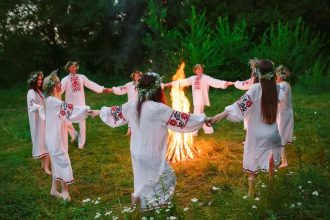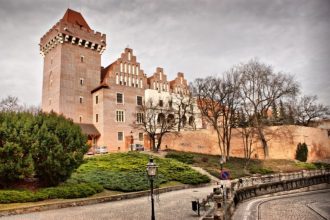Holly Week Folk Customs in Greater Poland

Traditional Holly Week customs and traditions in Greater Poland (Wielkopolska) origin from the Slavic folk culture and are still popular nowadays, even in big cities like Poznań.
Palm Sunday – palm catkins
Bouquets of palm branches with verdigris or blueberry trimmings are blessed in church on the last Sunday of Lent. After coming back home, the palm catkins have to be swallowed to prevent shore throats. It is also said that there will be as many eggs are there are catkins eaten. The palm branches are put behind a picture until the next Ash Wednesday when they are burnt.
Good Friday – God’s wounds
In most homes, whoever gets up first on Good Friday fashions a rod and lashes the legs of those still sleeping with it. The (gentle) assailant says “Get up fools! We’re off to God’s wounds!” This is a relic of the sorcery connected with the belief in the symbolic power of trees and branches as givers of life. The Catholic Church reinterpreted this as a commemoration of the scourging of Jesus.
Holly Saturday – Święconka
It is customary to fast on Holy Saturday until the food has been blessed. Traditional Święconka is a symbolic quantity of food – bread, eggs, sausage, pancakes, butter and salt – which is placed in a basket adorned with green branches and a white napkin. Children add sweets there. Święconka is taken to church to be blessed by the priest. Later it is eaten during Easter Sunday breakfast.
The text is based on the materials from: https://regionwielkopolska.pl/en/greater-poland-wielkopolska-folk-culture/customs/spring/
Author: Kasia Skrzypczak// blog.cjo.pl

The article is a result of the Erasmus+ project „Let’s teach Europe! European Heritage as a pedagogical and integration tool in adult education.”
2020-1-PL01-KA204-082156 Strategic Partnerships for adult education.
You can find more interesting articles about the unique cultural heritage of Galicia, Calabria, Southampton and Great Poland on the project blog: https://letsteacheurope-erasmus.site/blog/


